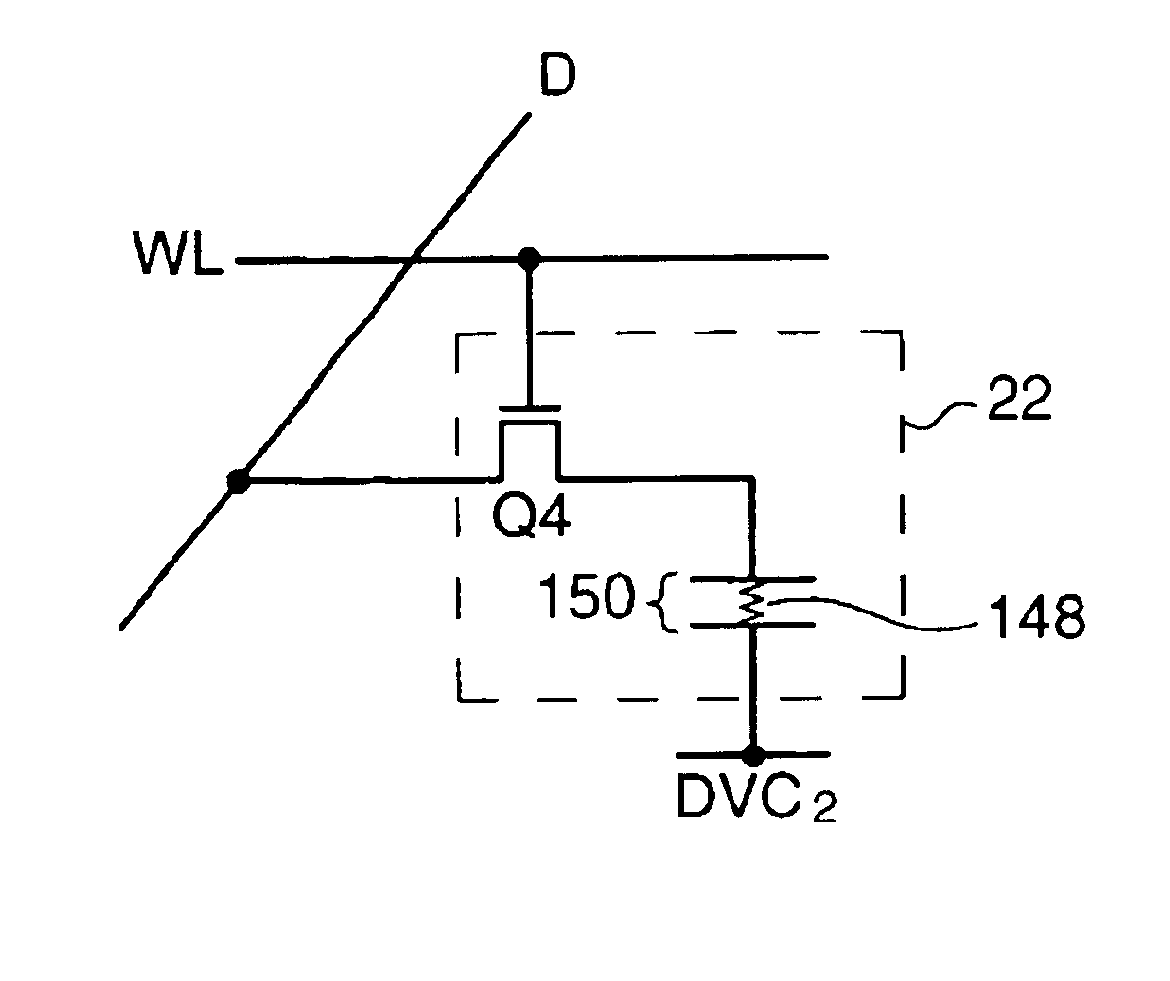Method of preparing to test a capacitor
- Summary
- Abstract
- Description
- Claims
- Application Information
AI Technical Summary
Benefits of technology
Problems solved by technology
Method used
Image
Examples
Embodiment Construction
[0035]FIG. 1 illustrates the general configuration of sense amps in a memory array. A pulldown sense amp 20 includes cross coupled n-channel transistors Q1 and Q2, as well as a pulldown transistor Q3, which is an n-channel transistor driven by a signal designated as LENSA. These elements play a part in sensing and amplifying a voltage difference between D and D* caused by shorting a memory cell 22 to D by way of access transistor Q4. The sources of Q1 and Q2 are connected to a common pulldown node 24, and the gate of each is connected to the other's drain. The gate of Q1 also connects to the line D*, whereas the gate of Q2 connects to the line D.
[0036]As discussed above, each line D and its corresponding line D* are initially at the same voltage DVC2. For purposes of explanation, DVC2 is assumed to be 1.65 volts, or one half of the source voltage VCC, which is 3.3 volts. Lines D and D* connect to opposite sides of each sense amp 20. Common pulldown nodes 24 found in the sense amp ar...
PUM
 Login to View More
Login to View More Abstract
Description
Claims
Application Information
 Login to View More
Login to View More - R&D
- Intellectual Property
- Life Sciences
- Materials
- Tech Scout
- Unparalleled Data Quality
- Higher Quality Content
- 60% Fewer Hallucinations
Browse by: Latest US Patents, China's latest patents, Technical Efficacy Thesaurus, Application Domain, Technology Topic, Popular Technical Reports.
© 2025 PatSnap. All rights reserved.Legal|Privacy policy|Modern Slavery Act Transparency Statement|Sitemap|About US| Contact US: help@patsnap.com



